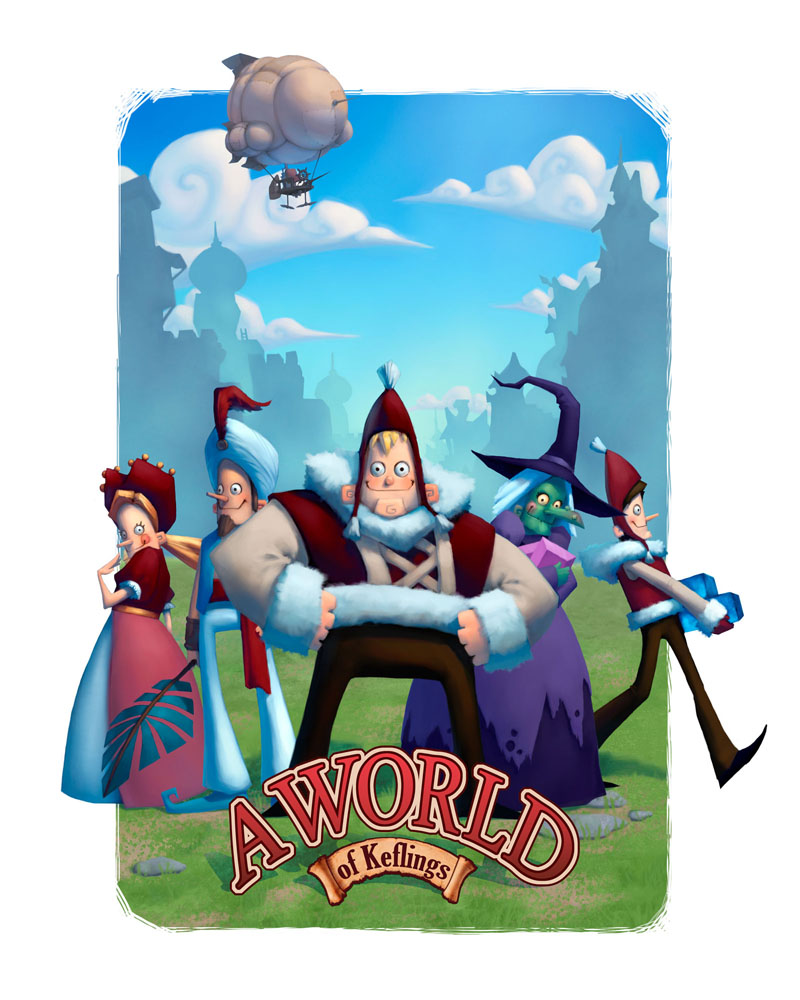World Of Keflings is a sequel to the PC title, Kingdom for Keflings. The game tasks your Mii, a giant, to help build kingdoms so its Kefling citizens can prosper. You and your Kefling friend will need to collect raw materials necessary to expand the population. You’ll need to manage how the Keflings interact with their environment by giving them jobs such as miner, lumberjacks, and transporter. The longer they are working, the more they level up (but only to a maximum of level five). The world in World of Keflings is charming. The Keflings who inhabit the world have their own little quarks, and some of the dialogue got a chuckle out of me.
Task management is a core mechanic in any RTS game, but this is where World of Keflings suffers the most. Players can assign tasks to both Keflings and buildings by interacting with them, but whereas in other games, you can speed across the map using a cursor, your movement is limited by your own Mii’s walking speed. This sluggish movement then turns what should be a quick click, into a time-consuming task. To assign Keflings to transport materials to workshops, you need to literally walk them to the shop they need to visit. World of Keflings even needs your go-ahed to level up the Kefling’s jobs. The task is annoying enough when your town is small, but when everything builds up tracking these Keflings down becomes a huge hassle.
There are only three environments to explore, but none are very large; simply one or two land masses to build upon. However, given the sluggish pace of the Miis, moving across these lands will still take a bit of time. The main campaign is fairly short (for an RTS anyway), clocking in at around six hours, but I suspect this NinjaBee’s of intention.
Once these kingdoms grow, the pace of the game picks up, but introduces a new set of problems. Too much action begins to take a toll on the frame-rate and even the graphics. Keflings would sometimes disappear, and the ground would change into a completely different texture. Other times, some of the Keflings would simply walk in circles until I assigned them another job.
There are no charts explaining what tasks are being performed, so as your population booms, you can easily lose track of which Keflings are doings what jobs; the wrong job reassignment may end up halting an essential resource route. Resource management suffers from the same issue. To know your resource count, you’ll need to click on each workshop you have deposited materials into. Of course, these numbers do not include the number or resources simply sitting out in the world, so you are only left with a vague understanding of your stock.
For all of the problems World of Keflings has, you won’t need to worry about racing against the clock. There is no enemy forces or natural disasters to run up against, you feel free to take your time in setting up your ideal kingdom. If you mess up your production, there are no negative consequences (outside of your task taking that much longer to complete). Unfortunately, this lack of antagonist serves as a double-edged sword. Outside of simply performing the tasks assigned to me from the game, I never felt any motivation to continue expanding the kingdoms, which should be absolutely essential to any RTS title.
World of Keflings can be considered an introduction to the Real Time Strategy genre. There are no antagonists or conflicts to rush the player, as they try to figure out the system. The worlds are small, and there are not too many resources to keep track of, so first-time players won’t be overwhelmed. On the flip side, veteran players will find themselves bored very quickly with World of Keflings, and may not find much motivation to continue building these kingdoms. However, the graphical glitches and the dropped frames aren’t much fun for anyone, so I hope NinjaBee addresses those in their next title.
















